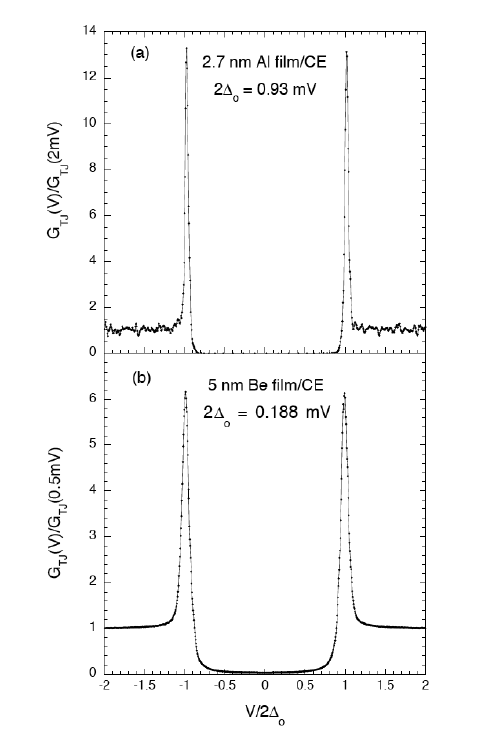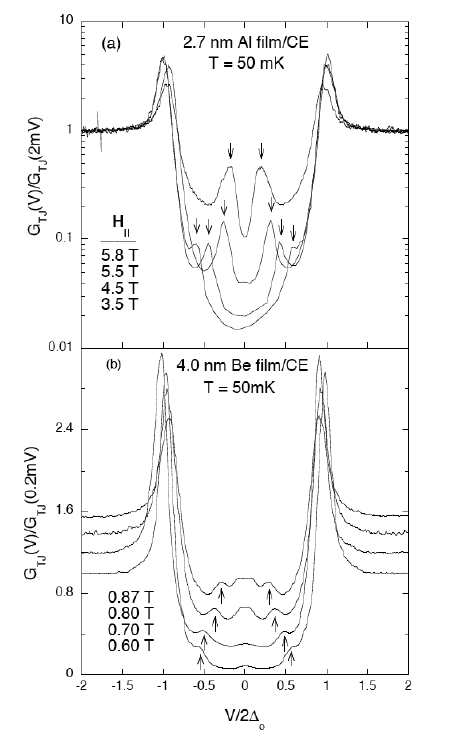
In this series of experiments we used spin-dependent tunneling to probe the spin states of ultra-thin Be and Al films near the spin-paramagnetic transition. To do this we employed superconductor-insulator-superconductor tunneling to measure the degree of spin mixing (singlet to triplet) in the condensate as the transition was approached from below. It turns out that S-I-S tunneling is exponentially sensitive to spin mixing effects. Our motivation was to see if we could see fluctuation modes associated with an unstable FFLO phase.
The data on the left shows the zero field S-I-S tunneling spectra of a ~4 nm thick Al film and 4 nm Be film. For each of these the tunneling counter-electrode was also thin. This allowed us to preserve the S-I-S configuration up to the parallel critical field. The BCS peaks occur at basically twice the gap of each material and should not be Zeeman split by a parallel field.

On the left is S-I-S tunneling spectra of the films in the above figure at several values of parallel magnetic field, where Hc|| = 5.9 T for the Al film, and 0.9 T for the Be film. The arrows show the location of the subgap peaks. The Be curves have been shifted for clarity.
The subgap peaks are due to spin-mixing. We do not believe that the spin mixing is caused by spin-orbit scattering, but that it is, in fact, a fluctuation effect associated with an unstable FFLO phase. The finite-momentum superconducting FFLO phase is extremely sensitive to disorder, and is not expected to be directly observable in thin elemental films.
Read more: